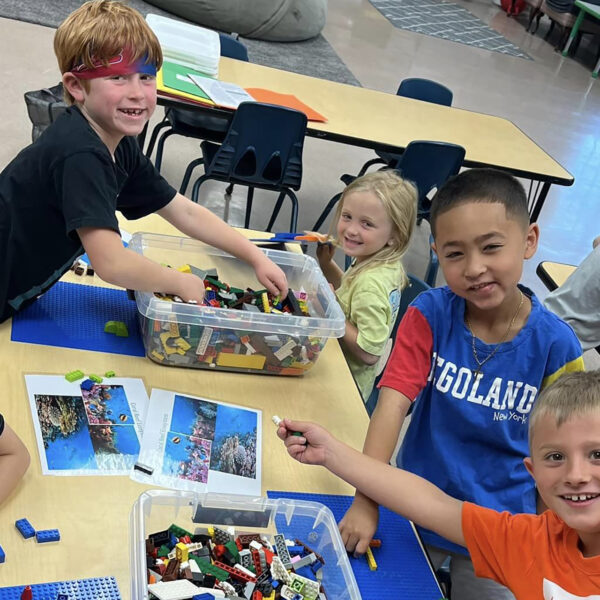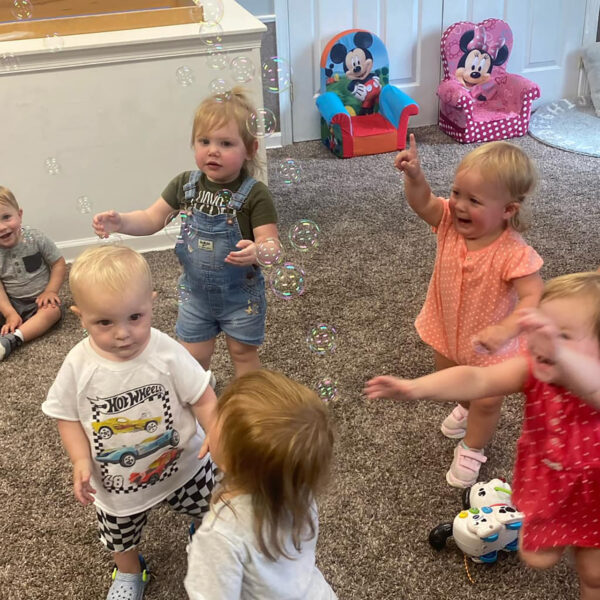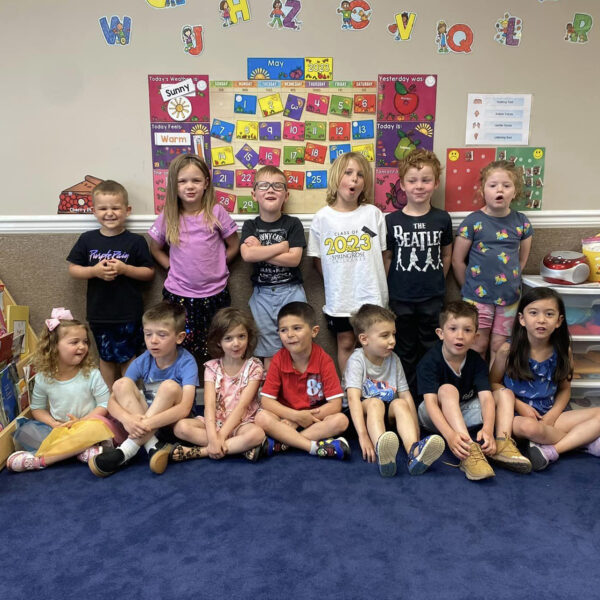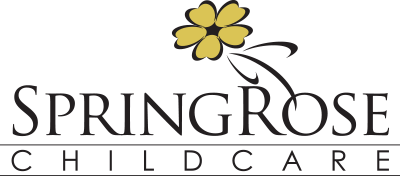Classrooms
Most of the classrooms at SpringRose Childcare consist of mixed-ages. Below is a detailed explanation of mixed-age grouping.
Mixed-age grouping
Mixed-age grouping is a way of grouping children in which the children’s age range is larger than a year–sometimes 2 years and sometimes more. It is intended to optimize the educative potential of the mixture itself. In a mixed-age classroom, children stay with the same teacher for several years. For example, in a classroom with children who are 3, 4, and 5 years old, the children who enter at the age of 3 could remain with the teacher for 3 years.
In The Benefits of Mixed Age Grouping (1995), Katz provides a clear understanding of what “mixed-age grouping” means. She writes that “Although humans are not usually born in litters, we seem to insist that they be educated in them.” In most families children are born one at a time, and if the parents opt to have more than one child, the children are spaced out over a few years. In the home, the older children help the younger ones with certain tasks. In this helping relationship, the younger and older children work together to help the younger learn new skills.
Take, for example, tying shoes. Older children who have mastered this skill will often help younger siblings tie their shoes. The older child has the opportunity to develop her patience, as well as the verbal skills necessary to communicate the steps to the younger child, while the younger learns how to tie her shoes. Often, an older child may read a story to a younger child, occasionally pointing out letters of the alphabet as they read. The older child has the opportunity to develop and solidify reading abilities, while the younger has an opportunity to develop listening and early reading skills.
These sorts of opportunities occur naturally in a home environment. However, as more parents join the work force, and children enter child care settings in which they are grouped according to age, there are fewer opportunities for children to learn from older or younger children in a natural way. Mixed-age classrooms allow this sort of interaction between older and younger children to occur.
The research supporting mixed-age classrooms indicates that academic achievement is the same as, or better than, the academic achievement of children in same-age classrooms. Mixed-age classrooms do not negatively affect student achievement, and students in these classrooms have significantly more positive attitudes toward school, themselves, and others (Stone, 1998; Veenman, 1996). The Association for Childhood Education International (ACEI) lists the following benefits of multiage classrooms:
- Children are able to spend several years with the same teacher. This allows the teacher to develop a deeper understanding of a child’s strengths and needs, and is therefore in a better position to support the child’s learning.
- Children have several years to develop, and are able to see themselves as progressive, successful learners.
- Children are viewed as unique individuals. The teacher focuses on teaching each child according to his or her own strengths, unlike in same-age classrooms that often expect all children to be at the same place at the same time with regard to ability.
- Children are not labeled according to their ability. For example, children in same-age classrooms may be labeled “below age level” or “low.” These children may stop trying, while those labeled as “above age level” or “high” may not feel challenged.
- In mixed-age classrooms, children have more time to master content.
- Children develop a sense of family with their classmates. They become a “family of learners” who support and care for each other.
- Older children have the opportunity to serve as mentors and to take leadership roles.
- Children are more likely to cooperate than compete. The spirit of cooperation and caring makes it possible for children to help each other as individuals, not see each other as competitors.
- Older children model more sophisticated approaches to problem solving, and younger children are able to accomplish tasks they could not do without the assistance of older children. This dynamic increases the older child’s level of independence and competence.
- Children are invited to take charge of their learning, by making choices at centers and with project work. This sense of “ownership” and self-direction is the foundation for lifelong learning.
- Children have almost an extra month of teaching time, because the teacher does not have to spend the early weeks in the school year getting to know each child. Less review of prior instruction is needed before proceeding with new content.




Curriculum
Early Learning Standards recommended by the Pennsylvania Department of Child Development encourages a curriculum and daily schedule, which is developmentally appropriate for children in their early years. SpringRose Childcare links all curriculums to the PA Learning Standards for Early Childhood.
The key areas of learning for Pre-Kindergarten:
- Approaches to learning
- Creative arts
- Language and literacy
- Logical mathematical
- Personal social
- Physical health
- Program partnership
- Science
- Social studies
The key areas of learning for Infant/Toddlers:
- Approaches to learning and cognitive development
- Creative Expression
- Communications and emerging literacy
- Social, emotional, and personal development
- Physical and motor development
- Family, early learning settings and community partnership
SpringRose generates thematic integrated curriculum. When themes are chosen, activities are planned to correlate with the theme and to address a variety of curricular areas. The curriculum focuses on developing a variety of skills in young children. The skills are related to the social, emotional, physical, and cognitive developmental domains. The curriculum also focuses on creativity, learning styles, and adaptability.
